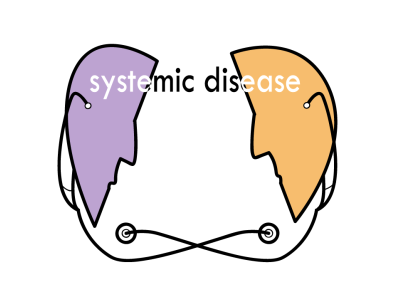Consider the following case study:
John is a white man. Micaela is a Latina woman.
During orientation, classmates ask John where he is from. John answers, “About 45 minutes outside of Chicago. You?” His classmates answer and the conversation continues. When Micaela answers the same question, her classmates follow-up with, “So, where are your parents from?” Micaela begins to feel different from her classmates, like she is somehow less American than them.
While rotating with a group of students, Micaela and John receive sign-out for an older woman admitted for syncope. The intern says, “Oh, she’s also complaining of pain, but, you know those elderly Latino women — they’re always complaining about pain everywhere.” The students in Micaela’s group nod, including John. Micaela feels angry, wondering how her classmates would care for her grandmother.
On the wards, Micaela and John are on shift together. Micaela taps the resident on the shoulder, who spins around and asks, “Are you one of the cleaning staff?” Both Micaela and John are wearing scrubs, hospital badges and stethoscopes.
Now, consider how these experiences add up for John and Micaela. John walks through his training accruing knowledge and practice, building his confidence as a future health care provider. Micaela, on the other hand, is checked by doubt and exclusion. As her classmates and instructors unintentionally cause her to feel ‘other’ and undeserving, Micaela’s self-esteem erodes.
News media reports on ongoing student movements typically do not cover these daily encounters of people like John and Micaela. Many critics have viewed student protestors as a bunch of coddled, ungrateful Millennials whining about feeling “hurt” over a few thoughtless stunts by fraternity brothers and an email that defended ‘intellectual freedom.’ Stories with this angle overlooked the reality that by the time students like Micaela arrive at college or medical school, they have already accumulated a lifetime of the “indignities” exemplified above, conveyed through words, behaviors or surrounding environments.
Subtle and commonplace, these “microaggressions” communicate insult based on aspects of a person’s identity, such as race, gender or socioeconomic status. They are committed unintentionally as a result of the unconscious biases we develop from our social and learning environments.
As medical students, we recognize that bias in medicine is doubly damaging: it burdens our peers and it harms our patients. In the opening narratives we see both of these at play: in Micaela’s self-doubt and frustration, and in the intern’s judgment of their older, Latina patient. Such clinician bias has been increasingly shown to contribute to widespread health inequities.
Yet, in medicine we learn bias like we learn the physical exam: deliberately — and then automatically — until it becomes fixed in our muscle memory.
Research encourages providers to discriminate between black and non-black patients when treating high blood pressure, misleadingly confounding race — a social construct, not a biological trait — with clinical outcomes. Our textbooks show cystic fibrosis on white bodies and syphilis on black bodies, priming us to look for certain diseases in certain skin palettes. We learn exam maneuvers and tests, like the Allen’s test for parallel circulation to the hand, that only work on white bodies. Through this process, we learn that race-based bias is acceptable and appropriate.
Amid the frenetic pace of a hospital or clinic, these biases often go unchecked. For instance, research indicates that African-American patients are more likely to receive lower-quality pain medication even after controlling for health insurance or medical facility. Another study demonstrated that women are less likely to receive pain medication, or have to wait longer for it, compared to men presenting with similar symptoms of acute abdominal pain in the emergency department.
The subjectivity of pain makes it a natural place for hidden biases to emerge. While these biases are unintended and automatic, they have significant consequences for a person’s health. Although recent health care legislation aims to address overt forms of bias and discrimination in the health sector, progress will be limited until larger, structural forms of bias are also remedied.
Seeing this link between individual experiences and institutional ramifications prompted us to launch an online platform that draws attention to the pervasiveness of bias and injustice in medicine. We label this injustice a “Systemic Disease” as it harms trainees, providers, patients and the health care community as a whole.
Our website offers an anonymous community that validates the experiences of those who have endured harassment and microaggressions in their learning environments, and renders visibility to these experiences in order to spur institutional, and systemic, responses. Each of the examples from Micaela’s vignette was adapted from a submission to our website and reveals the deep entrenchment of these biases in a profession entrusted with healing.
Many of the demands made through the student protests would reduce the harmful effects of unconscious bias. For instance, requiring diversity training or coursework would promote awareness of structural inequities and increase intergroup understanding. Greater investment in faculty and student diversity and changing physical environments would adjust the unconscious signals students receive about who ‘belongs’ and who was ‘let in.’ Tracking race-related offenses would increase accountability for bias and microaggressions and inform institutional and systemic reforms.
As our project and growing scientific evidence indicate, microaggressions and implicit bias yield a tangible detriment to people’s health. Strained by prejudice, Micaela may be more vulnerable to “physician burnout” later in her career. Without appropriate training, John is more susceptible to letting his unconscious biases interfere with the care he provides.
Our project builds upon the message of the student movements that have rattled our country: that institutional bias is an epidemic, a systemic disease. Only by joining up, speaking out, and documenting its symptoms can we eradicate it.
Editor’s note: A version of this article was previously published on The Huffington Post.



